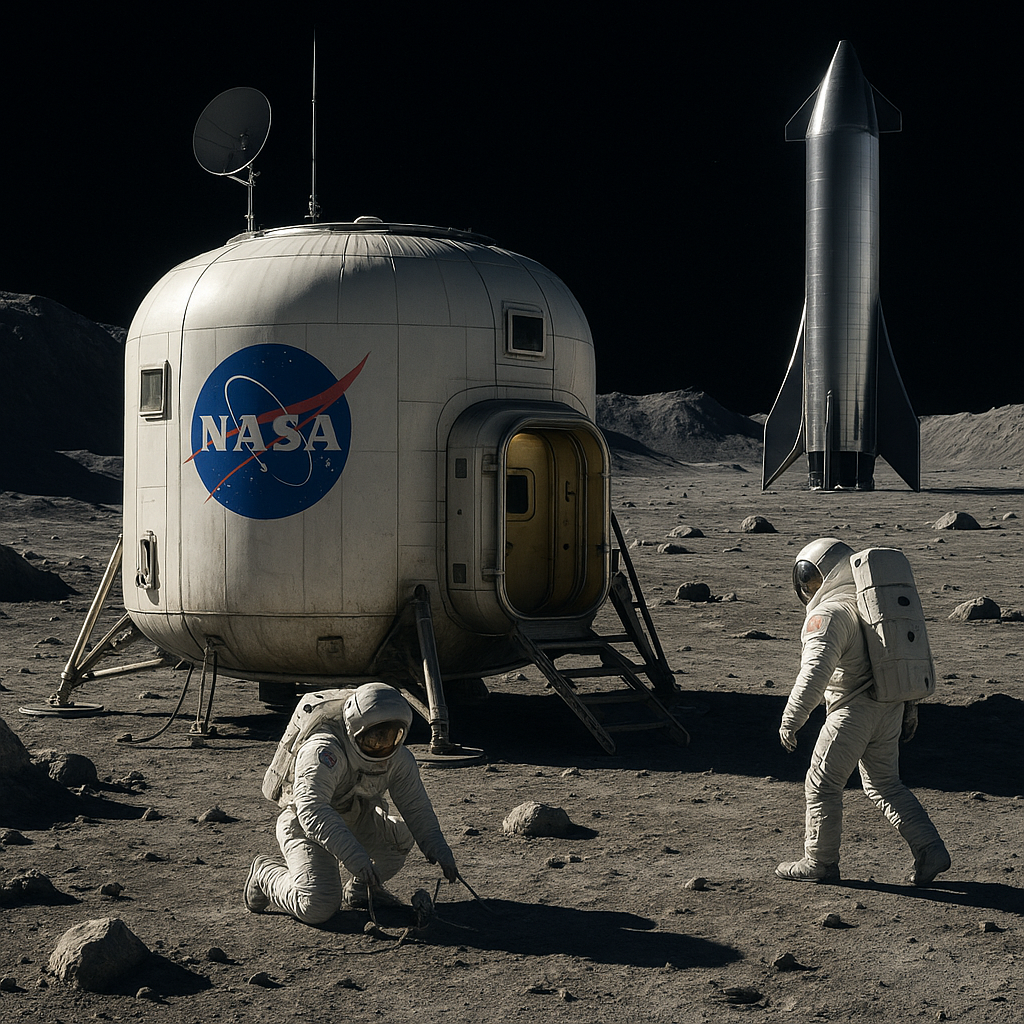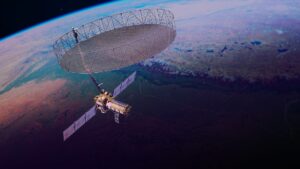July 21, 2025, Kennedy Space Center NASA has successfully delivered the first core habitat module for its upcoming lunar surface base as part of the Artemis IV mission. The module was transported aboard a modified SpaceX Starship lander and has been safely deployed near the Moon’s south pole.
This marks the first permanent infrastructure delivered to the Moon since the Apollo era and is the starting point for NASA’s long-term lunar outpost, called the Artemis Base Camp.
What Was Delivered
- Habitat size: 9 meters wide, 6 meters tall
- Capacity: Supports 4 astronauts for up to 30 days
- Features: Life support, radiation shielding, internal lab space
- Power: Powered by fold-out solar arrays and battery storage
The module includes docking ports for future expansion, including greenhouse, lab, and storage units expected to launch in 2026 and 2027.
Next Steps
Astronauts aboard Artemis IV will spend the next 14 days on the Moon configuring the module, testing its systems, and running initial science experiments. The site also includes a mobile robot that will bury regolith over the module to enhance radiation protection.
The crew will also begin surveying the nearby area for long-term ISRU (in-situ resource utilization) projects, including potential ice extraction.
Long-Term Vision
NASA plans to turn the Artemis Base Camp into a hub for both U.S. and international missions. The goal is to support year-round missions to the Moon by 2030, including commercial and international astronaut participation.
Agreements are already in place with ESA, JAXA, and CSA to contribute modules and surface rovers by 2028.
Conclusion
With the successful delivery of its first surface module, NASA has moved from exploration to construction on the Moon. The Artemis Base Camp is no longer just a concept — it’s officially under way, opening the door to long-term lunar presence and deep space missions beyond.
Sources: NASA Artemis Base Camp, Space.com, Reuters Technology




